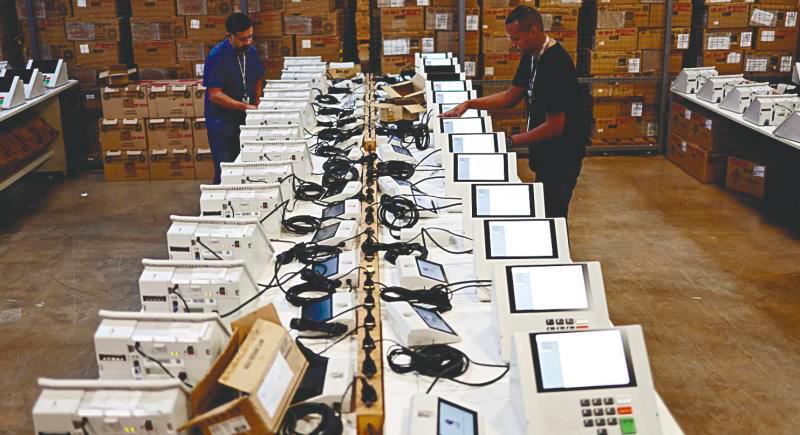THE time has come for our country to embrace the full potential of available technologies and adopt online voting or electronic voting (e-voting) systems.
Currently, we are relying on outdated voting methods that can cause inconvenience to many voters. This poses a significant problem as demonstrated in our recent general election (GE15) held during the monsoon season when widespread flooding made it difficult for voters to reach polling stations. Such circumstances will not only impact the voting process but also the overall outcome.
In addition, there are constant issues facing the traditional mode of voting, which can make it less effective. Therefore, it is crucial to replace it with a modern voting process that utilises technological advancements.
What is e-voting?
This mode refers to a voting method that leverages electronic means. Voters can cast their votes through a digital system instead of paper ballots.
Before the 21st century, e-voting did not exist and paper ballots were the sole medium for recording votes. However, since the late 1990s and early 2000s, e-voting has gained popularity and made significant advancements, despite concerns regarding auditing and transparency.
It is important to emphasise the numerous advantages of e-voting for all stakeholders involved in the election process.
For election management bodies, e-voting offers faster counting and delivering of election results, instilling greater trust in the electoral process by minimising the chances of human error. It also promotes increased voter turnout, reduces costs associated with multiple electoral events and decreases ballot waste.
E-voting brings convenience to voters as well. They can cast their votes remotely from the comfort of their homes or any location within the designated period specified by the Election Commission. This flexibility allows individuals facing difficulties, such as heavy rain or flash floods, to vote conveniently and safely, even if they are unable to reach polling stations.
Furthermore, e-voting enhances accessibility, particularly for individuals with disabilities. Features, such as sip-and-puff voting, paddle voting, high-contrast viewing screens and even audio voting, make the voting process easier, faster, more accurate and convenient.
Additionally, the on-screen ballots can be presented in multiple languages to cater to diverse communities.
Another significant benefit of e-voting is its potential to prevent fraud. By minimising direct interaction between poll workers and ballots or vote counts, e-voting reduces the chances of accidental or intentional discrepancies in vote tallies.
Various modes of applications
E-voting can also reduce errors, minimise the risk of fraud and enhance electoral integrity. There are various technological applications that enable e-voting, such as punched cards, optical scan voting systems and specialised voting kiosks, for instance, self-contained direct-recording electronic voting systems (DRE).
It can also involve the transmission of ballots and votes via telephones, private computer networks or the internet. Depending on the specific implementation, e-voting may use standalone e-voting machines (also called EVM) or computers connected to the internet (online voting).
This broad spectrum of e-voting services ranges from transmitting tabulated results to offering fully functional online voting accessibility through common household devices.
Broadly speaking, there are two primary types of e-voting: physically supervised systems conducted under the supervision of governmental or independent electoral authorities (e.g. electronic voting machines at polling stations), and remote e-voting via the internet (also known as i-voting), where voters electronically submit their votes to election authorities from any location.
Numerous countries have explored the adoption of electronic or online voting, employing diverse methods, such as placing voting machines in polling stations, centralising tallying of paper ballots or having internet-based voting.
However, only a small number of countries have embraced internet voting due to the challenges and concerns related to security and reliability. Some countries that have experimented with electronic approaches have discontinued their use for these reasons.
Countries that have implemented e-voting at polling stations or adopted internet voting include Australia, Belgium, Brazil, Estonia, France, Germany, India, Italy, Namibia, the Netherlands, Norway, Peru, Switzerland, the UK, Venezuela, Pakistan and the Philippines.
Give due diligence to ensure viability
Given the numerous benefits that e-voting or online voting can offer voters and the country as a whole, it is crucial for the government and relevant agencies, such as the Election Commission, to conduct a comprehensive study on this proposal.
To facilitate the research, a special committee should be established. This committee should consist of not only politicians but also technology experts and individuals well-versed in legal aspects, such as judges, lawyers and academicians.
The implementation of e-voting requires a thorough examination of various legal aspects, including the Federal Constitution, and election-related laws in the country. Necessary reforms may need to be introduced before the e-voting process can be implemented.
The final approval for adopting e-voting or online voting in the country should address concerns related to security, transparency, accuracy, integrity, speed, privacy, auditability, accessibility, cost-effectiveness, scalability, and ecological sustainability. These considerations are essential to prevent any conflicts and ensure a smooth and successful transition to the new voting method.
The writer is an Associate Professor, Faculty of Syariah and Laws, Universiti Sains Islam Malaysia. Comments: letters@thesundaily.com













